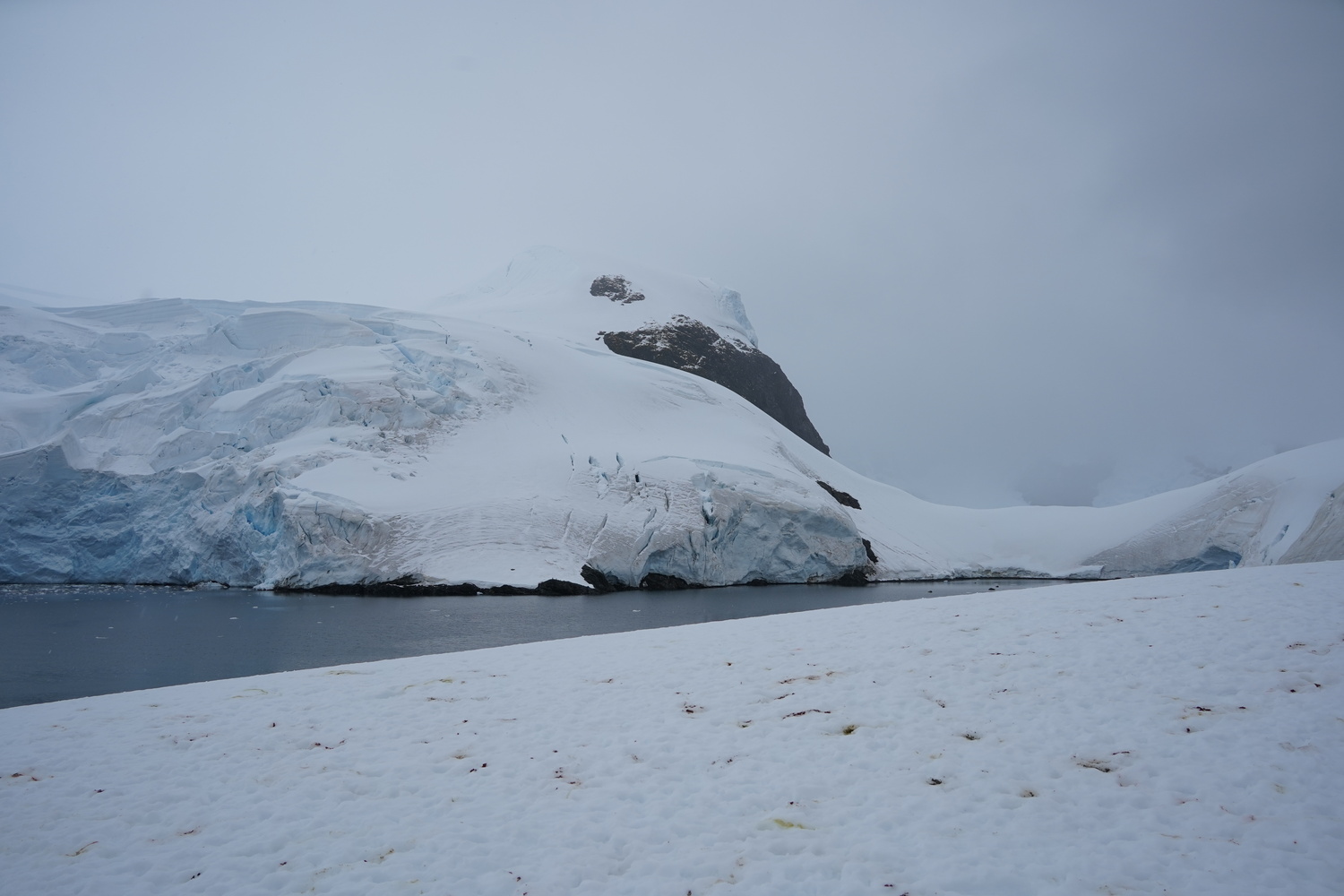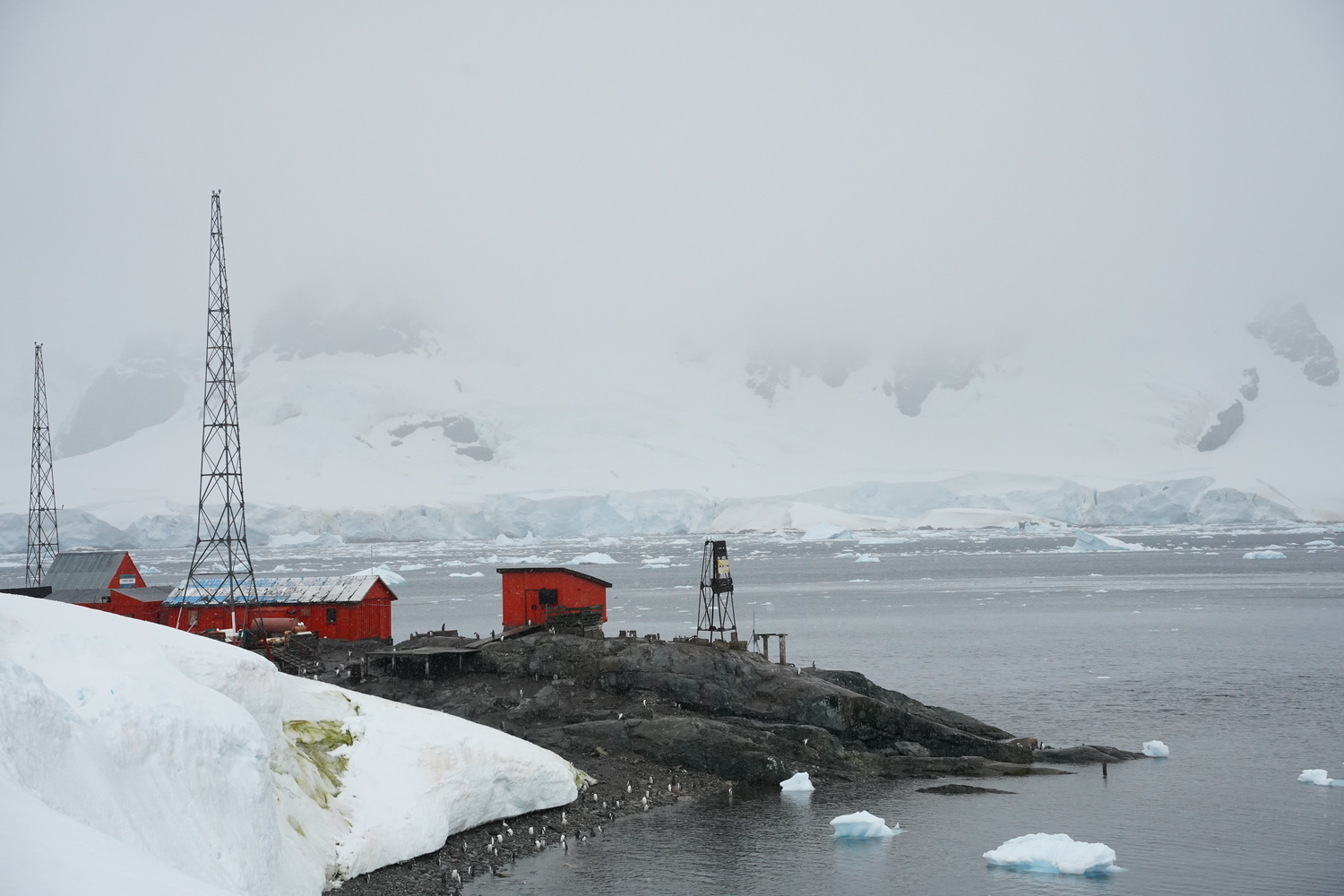
Antarctica
Mountains seen upon first sight of Antarctica.
A7C: 1/125 seconds @ 31mm. ƒ/5.6, ISO5000.
Mountains seen from a Zodiac while exploring Flandres Bay.
RX100: 1/500 seconds @ 70mm. ƒ/8, ISO640.
A glacier seen from a Zodiac while exploring Flandres Bay.
RX100: 1/500 seconds @ 40mm. ƒ/8, ISO1250.
A glacier with a massive cave in it seen while transiting from Port Charcot to Flandres Bay.
A7C: 1/500 seconds @ 28mm. ƒ/6.3, ISO250.
Penguins fighting over territory in Port Charcot.
A7C: 1/2500 seconds @ 200mm. ƒ/5.6, ISO5000.
Penguins having a bit of a conference about some important matters.
A7C: 1/2000 seconds @ 133mm. ƒ/5.6, ISO1250.
A penguin standing alone on top of a giant rock in Cuverville Island.
A7C: 1/500 seconds @ 156mm. ƒ/8, ISO320.
A petrel flies overhead on Cuverville Island.
A7C: 1/1600 seconds @ 200mm. ƒ/8, ISO1000.
G Adventures’s MS Expedition in the bay near Port Charcot.
A7C: 1/320 seconds @ 57mm. ƒ/9, ISO400.
A group of humpback whales resting on the surface of the water in Fournier Bay.
A7C: 1/2000 seconds @ 101mm. ƒ/5.6, ISO2000.
A humpback whale surfacing for air in Fournier Bay.
RX100: 1/2000 seconds @ 70mm. ƒ/6.3, ISO1250.
The mouth of a humpback whale surfacing for food in Fournier Bay.
RX100: 1/1600 seconds @ 70mm. ƒ/4.5, ISO4000.
An adult orca with its calf surfacing for air in Antarctica.
A7C: 1/1600 seconds @ 200mm. ƒ/5.6, ISO640.
Mountains seen on the water while leaving Antarctica.
A7C: 1/1600 seconds @ 140mm. ƒ/5.6, ISO125.
The Argentine research base, Brown Station, which has been overrun by penguins.
A7C: 1/800 seconds @ 70mm. ƒ/8. ISO3200
In March of 2025, I took a cruise with G Adventures from Ushuaia to Antarctica.
On the first day, we visited Port Charcot and Flandres Bay. Port Charcot was the site of a former French expedition base named after Jean-Baptiste Charcot. It currently does not house any permanent bases but is home to a colony of Gentoo penguins. It notably has a cairn that was constructed to commemorate the French expedition.
The second day had us exploring Cuverville Island, which is home to one of the largest colony of Gentoo penguins in the world. We saw quite a bit of wildlife there. In addition to the penguins, we saw fur seals, Weddell seals, a leopard seal, petrels, skuas, and many more. That day, we also got to make a landing at Neko Harbour. This harbor landing also had plenty of penguins, but the main attraction was a long steep hike up to a marvelous view of a glacier.
The next day involved most people on the ship (approximately 100 out of 134) jumping into the frigid waters of the Southern Ocean in the morning, and an exploration by Zodiac boat of Fournier Bay in the afternoon. This was easily the coolest day of the entire trip. While we generally were less excited about the more passive Zodiac explorations than we were about landings, we were joined by about three dozen humpback whales in Fournier Bay. It made for some excellent whale watching and exploration.
The final day had us visiting and making landfall in Paradise Bay, home to Argentina’s Almirante Brown research station. The station only operates in the summer, so it had been closed by the time we made it there.
Below is an incredibly small sample of the over 200 final pictures I selected from my Antarctica shots (of which there were almost 1600 candidate shots). All of the images were shot either on my Sony RX100 VA or Sony A7C (with a Tamron 28-200mm lens). The camera is noted in the caption of each image, along with its settings. The focal lengths in the captions are all (very roughly) the full-frame equivalent. Since the Sony RX100 VA uses a 1 inch sensor, all the focal lengths are multiplied by about 2.7.














